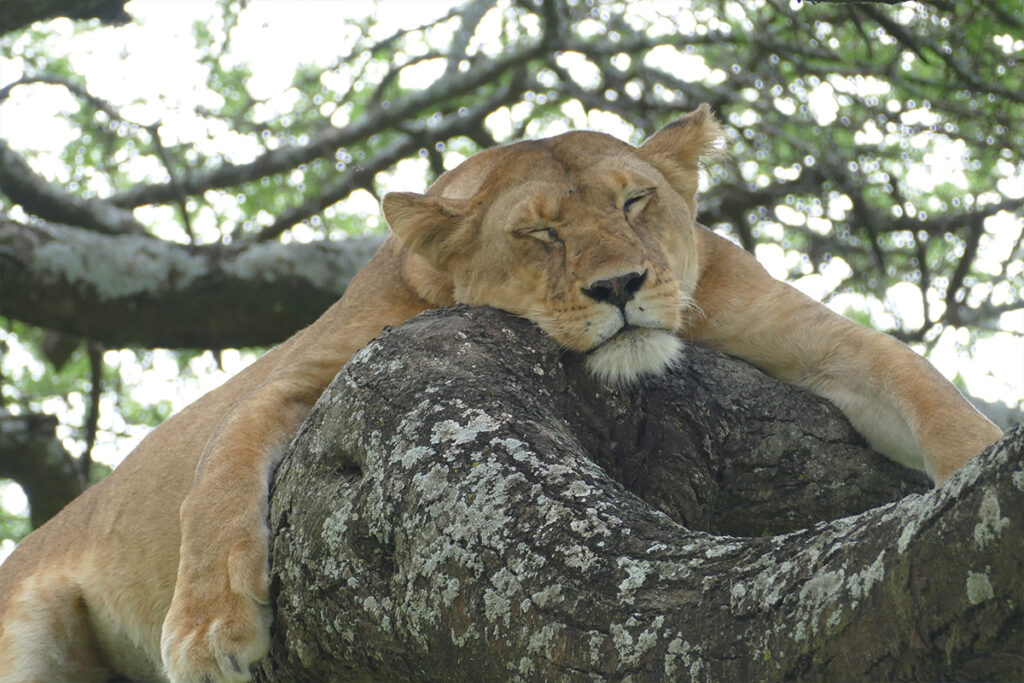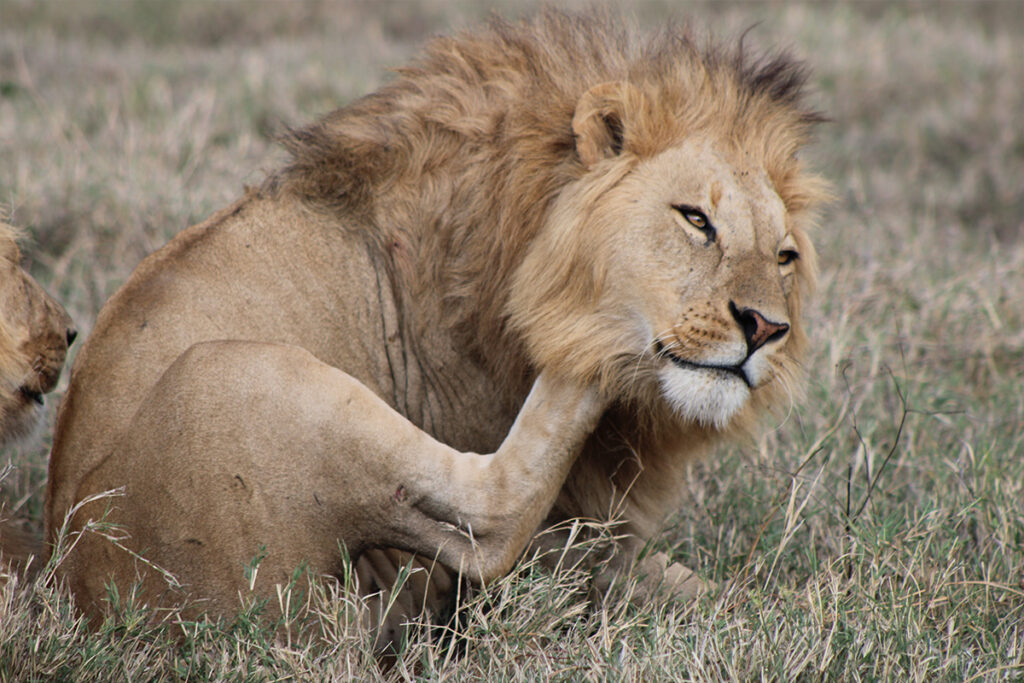Climbing Mount Kilimanjaro is no small feat, and staying hydrated is one of the biggest challenges. Elevation gain and cold weather can disguise dehydration. This makes it even more crucial for climbers to stay vigilant about their water intake.
The history of successful climbs shows that maintaining hydration can significantly improve performance and reduce the risk of altitude sickness. Experts often recommend carrying a hydration bladder for easy access to water, aiming for 3 to 5 liters per day. Using electrolyte supplements can also support fluid retention and overall endurance.

Hydration Tips: Staying Hydrated on Kilimanjaro
Climbing Kilimanjaro requires significant physical effort, and staying hydrated is crucial. The high altitude can increase fluid loss through respiration and sweat. Dehydration can lead to serious health issues like altitude sickness. Therefore, it is vital to monitor your water intake. Drinking small amounts frequently can be more effective than gulping down large amounts.
Aim to drink at least 3 to 4 liters of water every day while climbing. It’s essential to carry a hydration bladder or water bottles for easy access. Using electrolyte tablets can help maintain balance, especially since sweat can deplete important minerals. In addition to water, consider hydrating with soups or broth. This practice adds both flavor and necessary minerals to your consumption.
Keep an eye out for signs of dehydration including headache, dizziness, and dark urine. If you notice any of these symptoms, increase your water intake immediately. Prevention is better than cure, so hydration should start a few days before your climb. By hydrating in advance, you prepare your body for the challenges ahead. Consistency is key, don’t wait till you’re thirsty.
Hydration on Kilimanjaro is not just about drinking water; it’s also about maintaining your body’s balance. Using a hydration checklist can help you stay on track. Make note of the times you drink and how much. Staying hydrated is an ongoing process that requires attention and dedication. Follow these tips, and your climb can be safer and more enjoyable.
Climbing Kilimanjaro: Clean Drinking Water in tanzania | Trek Tips
Importance of staying hydrated during the climb
Hydration is critical when you’re climbing a mountain like Kilimanjaro. Fluid loss is higher at high altitudes due to increased breathing rates and perspiration. This makes it essential to replenish those fluids regularly. Without enough water, the body can’t regulate temperature efficiently. Proper hydration helps maintain energy levels throughout the climb.
Staying hydrated can also prevent altitude sickness, which is common at higher elevations. Symptoms like headaches and nausea can be lessened by maintaining adequate fluid intake. Improved focus and cognitive function are additional benefits of staying well-hydrated. Awareness of your hydration status helps in making quick decisions during challenging parts of the climb. It is an easy way to boost safety and comfort.
A strong hydration strategy includes more than just drinking water. Including electrolytes is crucial to replace lost minerals. Small sips throughout the day are more effective than drinking large amounts once or twice. Timing hydration with meals maximizes absorption and aids digestion. Some useful items to carry include a hydration bladder and water purification tablets.
It’s necessary to plan ahead and stock enough water for the day. Reliable water sources may be scarce as you ascend. Here’s a quick checklist for your hydration plan:
- Monitor urine color for hydration status
- Drink at regular intervals
- Add electrolytes to your water
- Avoid caffeinated drinks
Being prepared can make your climb safer and more enjoyable.
Warning signs of dehydration
Noticing the warning signs of dehydration early is essential for climbers. Common symptoms include headaches, which might feel like a tight band around the forehead. Fatigue and dizziness may also suddenly appear, interfering with physical balance. These signs are the body’s way of asking for more fluids. Ignoring them can intensify health risks.
Pay close attention to changes in your urine color, as darker shades may indicate dehydration. Your body might also produce less urine than usual. Dry skin and chapped lips are visible signs that shouldn’t be overlooked. If you experience muscle cramps, it’s time to take a hydration break. Even subtle hints like a dry mouth can signal the need for water.
Dehydration can also impact your mood and mental clarity. Feeling unusually irritable or having difficulty focusing might be related to low fluid levels. Maintaining hydration helps in keeping a positive outlook and sharp mind. Unchecked, dehydration can evolve into severe conditions requiring medical intervention. Being proactive can prevent these complications.
A hydration plan can mitigate the risk of dehydration before symptoms escalate:
- Drink water regularly, even without feeling thirsty
- Monitor your body’s reactions to activity levels
- Take breaks in shaded areas
- Avoid caffeine and alcohol
Adjusting habits ensures safety and well-being during your adventure.
Recommended amount of water intake
Understanding the recommended water intake is crucial for a safe climb. Experts suggest drinking at least 3 to 4 liters of water daily while ascending Kilimanjaro. This helps counteract the increased fluid loss due to higher altitudes. The exact amount can vary depending on your body size and exertion levels. Carrying a hydration system ensures you stay hydrated throughout the day.
For a more precise guideline, consider factors like the climate and pace of your climb. Warmer days and faster paces require more water. Here’s a simple table for daily water intake based on different variables:
| Climate | Pace | Recommended Intake |
|---|---|---|
| Hot | Fast | 4-5 liters |
| Cold | Slow | 3 liters |
| Moderate | Average | 3-4 liters |
It’s best to drink water consistently rather than in large quantities at once. Small sips can prevent the discomfort of a full stomach. Adding sports drinks or electrolyte solutions can be beneficial. This helps replenish essential minerals in addition to water. Diversify your hydration sources to include soups and broths during meals.
Monitoring your hydration goes beyond just drinking the recommended amount. Be mindful of your body’s signals. Adjust your intake if you feel thirsty, fatigued, or notice dark urine. Take extra care during strenuous activities and rest periods. Always err on the side of caution with hydration.
Incorporating these practices can make your climb more efficient. They help ensure your body’s optimal performance and well-being. Proper hydration can improve your overall climbing experience, making it safer and more enjoyable. Stay attentive and proactive about your water intake throughout the journey.
Appropriate use of electrolyte supplements
Electrolyte supplements play a key role in maintaining balance during strenuous climbs. They help replenish essential minerals lost through sweat, like sodium and potassium. These minerals are crucial for muscle function and nerve signaling. Consuming them through supplements can reduce cramps and fatigue. They support overall endurance, keeping you in top form.
Choosing the right supplement depends on your specific needs. Options come in various forms such as tablets, powders, or drinks. Look for products with a balanced mix of sodium, potassium, and magnesium. Reading labels can help you make an informed choice. This ensures you’re getting the right nutrients.
- Tablets: Easy to carry and use
- Powders: Can be mixed with water for quick absorption
- Drinks: Provide immediate replenishment with added hydration
Timing is also important when taking electrolytes. Taking them before starting your climb prepares your body. Regular intake during the climb maintains levels effectively. After strenuous activity, they aid in recovery too. This layered approach maximizes benefits.
Too much of anything can be harmful, so moderation is key. Oversupplementing can lead to imbalances, negating the positive effects. Sticking to recommended dosages is a smart strategy. This prevents potential side effects like nausea or bloating. Always consult with a healthcare professional for personalized advice.
Integrating electrolyte supplements wisely can considerably boost your climbing experience. They keep your systems functioning at their best and help you stay hydrated. By understanding your body’s needs and selecting the right products, you can make the most out of your adventure. Stay informed and listen to your body while reaching new heights.
Impact of altitude on hydration
Climbing to higher altitudes impacts your body’s hydration in several ways. The air becomes thinner, leading to faster and deeper breaths. This increased respiration rate results in greater fluid loss. Additionally, cooler temperatures can diminish the sensation of thirst, causing a decrease in water intake. Together, these factors elevate the risk of dehydration.
At higher elevations, the body’s demand for hydration increases. This is because the air is also drier, which can cause the body to lose moisture more quickly. Your body works harder to maintain its functions, requiring more fluids to keep everything balanced. Maintaining proper hydration becomes more challenging but crucial. Monitoring hydration constantly can help manage these demands.
Altitude impacts not only fluid loss but also electrolyte balance. Understanding these changes is essential for effective hydration strategies. Climbing can lead to losing essential minerals along with water. Replenishing these via electrolyte drinks or supplements is vital. This helps in keeping muscles and nerves functioning properly.
Staying hydrated at high altitudes affects every part of your body’s performance. It helps to prevent altitude sickness, enhancing stamina and overall well-being. Even small levels of dehydration can impair cognitive abilities and physical strength. Being proactive about hydration helps sustain energy levels. Balance between water and electrolytes is key.
Using tools like hydration bladders and frequent hydration breaks can aid in combating the effects of altitude:
- Hydrate regularly with small sips
- Monitor urine color and frequency
- Adjust hydration based on activity levels
- Incorporate electrolytes into your hydration routine
Understanding how altitude affects hydration helps you prepare better for the climb. Stay vigilant about your fluid intake and make hydration a priority. This ensures that you remain healthy and capable throughout your adventure. Proper hydration planning can make or break the success of your climb.
Optimal hydration strategies for Kilimanjaro climbers
Successfully climbing Kilimanjaro requires careful attention to your hydration strategy. Begin by drinking water even before the climb starts, ensuring that you’re well-hydrated from day one. During the ascent, aim to drink 3 to 4 liters of water daily. This consistent intake helps counteract the fluid loss caused by altitude and exertion. Always have your water easily accessible.
A mix of regular water and electrolyte solutions offers balanced hydration. Electrolytes help replace essential minerals lost through sweat, maintaining overall body function. Adding a sports drink or electrolyte tablet can be effective during rest breaks. Remember, variety aids in keeping hydration from feeling monotonous. Fluids should remain both refreshing and functional.
- Carry a hydration bladder or water bottles
- Add electrolyte supplements to your routine
- Monitor urine color as a hydration indicator
- Avoid caffeinated drinks that can dehydrate
Smoothie-style drinks or herbal teas are alternatives during meal times for additional fluid intake. These beverages also provide some nutrients while hydrating. Considering the cool temperatures at higher altitudes, warm drinks can boost morale and keep you hydrated simultaneously. Combining different types of fluids supports varied nutritional needs as well.
An easy-to-follow routine makes it simpler to stay on track with hydration needs:
| Time | Hydration Activity |
|---|---|
| Morning | Drink a full glass of water before breakfast |
| Noon | Sip electrolytes during hikes and lunch breaks |
| Evening | End the day with tea or warm fluids after dinner |
Pacing yourself is vital; don’t wait until you feel thirsty to drink—by then, dehydration may have already set in. By planning thoroughly and utilizing various forms of fluids, you can maintain endurance levels throughout this challenging yet rewarding trek.
Available hydration gear for mountain climbers
Having the right hydration gear is crucial when tackling a climb like Kilimanjaro. The first essential item is a hydration bladder, which fits conveniently into backpacks. Bladders allow climbers to sip water through a hose without stopping. They’re perfect for maintaining hydration on the move. They come in various sizes to suit different needs.
Water bottles are another reliable option, offering versatility in handling different types of liquids. Insulated bottles can keep beverages at temperature, which is helpful in cold mountain climates. Easy to refill and clean, bottles are favored by those who like structured hydration breaks. However, they do require stopping to drink. Weighing the pros and cons is key to finding what suits you best.
- Hydration bladders: hands-free use
- Water bottles: versatility and easy cleaning
- Insulated bottles: temperature control
- Filtration systems: purify water from natural sources
Filtration systems are essential for trips where refilling from natural sources is necessary. These compact devices ensure the water is safe to drink, removing harmful bacteria and particles. They are especially useful in remote areas where clean water isn’t readily available. Filtering systems come in pump, straw, and gravity-based variations. Choosing the right one can save weight and space.
Sterilizing equipment, like UV pens, offers another layer of protection. They are used to treat water quickly, making it safe to consume within minutes. Lightweight and efficient, UV pens are popular for their convenience and effectiveness. Backup purification tablets are also a good idea as extra safety. Combining gear like bladders, bottles, and purifiers forms a comprehensive hydration strategy.
Personal experiences: Staying Hydrated on Kilimanjaro
Many climbers share valuable insights about their hydration practices on Kilimanjaro. One frequent hiker, Sarah, emphasized the importance of a hydration schedule. She found that setting a timer to sip water every 15 minutes kept her hydrated. Sarah also noted that starting the day with a large glass of water made a big difference. This practice fueled her initial energy levels and set a positive tone for the day.
Another climber, James, highlighted the benefits of using electrolyte tablets. He explained that these supplements helped in avoiding muscle cramps and maintaining his stamina. James advised combining both water and electrolyte solutions. This blend ensured he stayed energized and prevented dehydration. Knowing when and how much to drink was key.
- Set timers for regular sipping
- Drink a large glass of water in the morning
- Use electrolyte tablets to prevent muscle cramps
- Combine water and electrolyte solutions
Emma shared her experience of using a hydration bladder during her climb. She enjoyed the hands-free convenience it offered, allowing her to drink without stopping. Emma recommended practicing with the gear before the climb. Familiarity with your equipment can reduce potential issues during the ascent. This practical approach smooths the overall journey.
Alex had a slightly different take. He preferred using insulated water bottles to keep his drinks at a comfortable temperature. Alex suggested carrying a mix of hot and cold drinks in separate bottles. He emphasized the mental boost from a warm drink on cold mornings. This diversity in hydration kept him engaged and motivated throughout the climb. Each climber’s strategy added an important tip to the collective wisdom.
Key Takeaways
- Drink 3-4 liters of water daily on Kilimanjaro climbs.
- Use hydration bladders or water bottles for easy access.
- Include electrolyte supplements to maintain mineral balance.
- Watch for dehydration signs like dark urine and dizziness.
- Consistency is key for effective hydration and safety.




